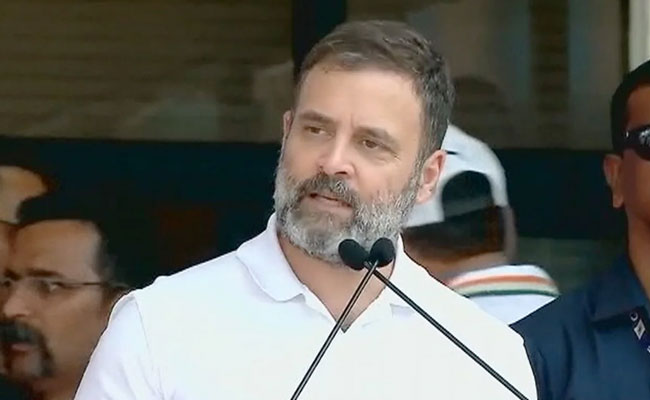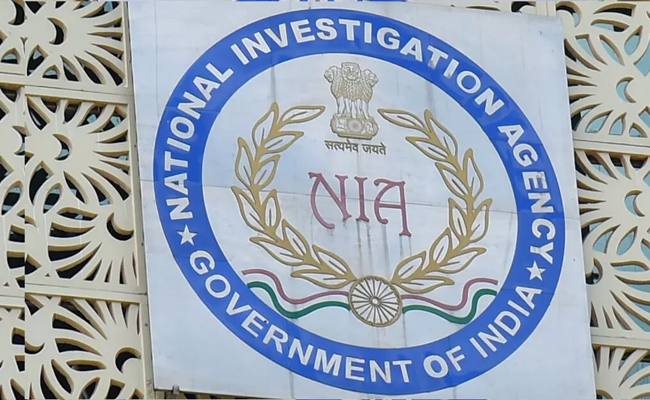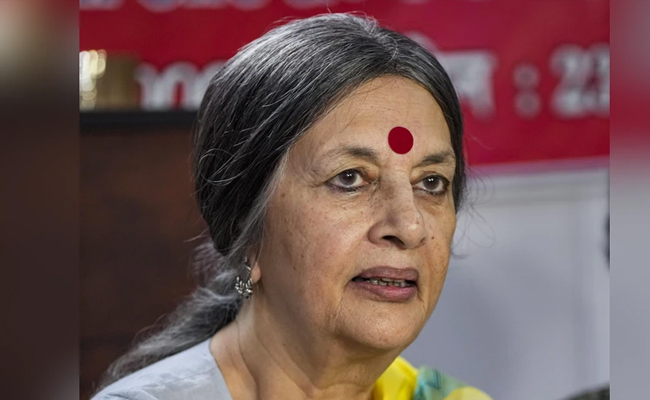Bengaluru (PTI): Congress leader Rahul Gandhi on Saturday said the five 'guarantees' promised by the party before the elections in Karnataka will be implemented within a few hours after the first Cabinet meeting.
He also said the people of Karnataka defeated BJP's "hatred and corruption" in the Assembly elections.
"I had said we don't make false promises. We do what we say. The first cabinet meeting of the new government will take place in one to two hours. In that meeting, all the five 'guarantees' will become a law," Gandhi said after the swearing-in ceremony of Siddaramaiah as Chief Minister.
These guarantees are: 200 units of free power to all households (Gruha Jyoti), Rs 2,000 monthly assistance to the woman head of every family (Gruha Lakshmi), 10 kg of rice free to every member of a BPL household (Anna Bhagya), Rs 3,000 every month for unemployed graduate youth and Rs 1,500 for unemployed diploma holders (both in the age group of 18-25) for two years (YuvaNidhi) and free travel for women in public transport buses (Shakti).
Political observers said the promise of 'guarantees' found resonance with the people during the campaigning, particularly women, and played a key role in the stupendous victory of the Congress in the Assembly polls.
Gandhi also said the Congress won the election because it had "truth and the backing of poor people" by its side whereas the BJP had "money, power and police."
"However, the people defeated the BJP, their corruption and hatred in the election. As we had said in our Padayatra, love won and the hatred lost," Gandhi said.
He also expressed his gratitude to the people of Karnataka for their wholehearted support to the Congress.
"We understand the sufferings you underwent in the last five years. Media wrote about why the Congress won the election. Various analyses and various theories were floated. However, the reason for the victory was that the Congress stood by poor, weaker sections and backward communities, Dalits and tribals," he said.
In the May 10 Assembly elections, the Congress ousted the BJP from power, winning 135 seats in the 224-member Assembly. BJP got 66 seats and the Janata Dal (Secular) headed by former Prime Minister H D Deve Gowda managed only 19.
Let the Truth be known. If you read VB and like VB, please be a VB Supporter and Help us deliver the Truth to one and all.
Mumbai (PTI): In view of Argentine superstar footballer Lionel Messi's visit to Mumbai on Sunday, the city police are implementing stringent security measures, like not allowing water bottles, metals, coins inside the stadiums and setting up watchtowers to keep an eye on the crowd, officials said.
The police also said taking extra care to avoid any stampede-like situation and to prevent recurrence of the chaotic situation that unfolded in Kolkata during Messi's visit on Saturday as thousands of fans protested inside the Salt Lake stadium here after failing to catch a clear glimpse of the football icon despite paying hefty sums for tickets.
Messi is expected to be present at the Cricket Club of India (Brabourne Stadium) in Mumbai on Sunday for a Padel GOAT Cup event followed by attending a celebrity football match. He is expected to proceed to the Wankhede Stadium for the GOAT India Tour main event around 5 pm.
"In view of Lionel Messi's visit to Mumbai, the police are geared up and have put in place a high level of security arrangements in and around the stadiums located in south Mumbai. Considering the chaos that prevailed in Kolkata and the security breach, we have deployed World Cup-level security arrangements at Brabourne and Wankhede stadiums," an official said.
Expecting heavy crowd near the stadiums during Messi's visit, the city police force has deployed more than 2,000 of its personnel near and around both the venues, he said.
As the Mumbai police have the experience of security 'bandobast' during the victory parade of ICC World Cup-winning Indian team and World Cup final match at the Wankhede Stadium, in which over one lakh cricket fans had gathered, we are prepared to handle a large crowd of fans, he said.
"We are trying to avoid the errors that occurred in the past," the official said.
There is no place to sneak inside the stadiums in Mumbai like the Kolkata stadium, according to him.
The police are also asking the organisers to provide all the required facilities to the fans inside the stadium, so that there will be no chaos, he said, adding the spectators have purchased tickets in the range of Rs 5,000 to 25,000. After paying so much of amount, any spectator expects proper services, while enjoying the event, he said.
The police are expecting 33,000 spectators at the Wankhede Stadium and over 4,000 at Brabourne Stadium. Besides this, more than 30,000 people are expected outside and around the stadiums just to have a glimpse of the football sensation, he said.
The organisers responsible for Messi's India visit recently came to Mumbai to discuss security arrangements. During the meeting, the Mumbai police asked them not to take the event lightly, according to the official.
After those requirements were fulfilled, the final security deployment was chalked out, he said.
Police has the standard procedure of the security arrangements inside the Wankhede Stadium, where people are barred from taking water bottles, metals objects, coins. Police are setting up watch towers near the stadiums and there will be traffic diversions, so that there is maximum space available to stand, according to the official.
Police are also appealing to the spectators to use public transport service for commuting and avoid personal vehicles to reach south Mumbai.
To avoid any stampede-like situation, police are also taking precautionary measures and will stop the fans some distance ahead of the stadium and public announcement systems will be used to guide the crowd. Barricades will be placed at various places to manage the crowd.
In case the crowd swells up beyond expectation, the police will divert people to other grounds and preparations in this regard underway, he said.
Additional police force has been deployed in south Mumbai to tackle any kind of situation, he said.





